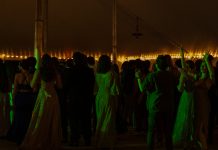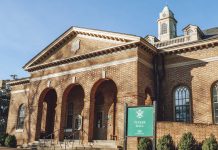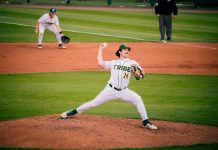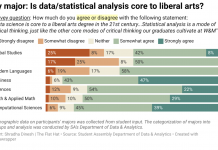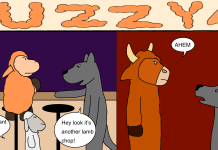At the entrance, an aged Italian masterpiece. To the right, a bold set of modern paintings. Before you, a series of prints and lithographs by the creators of the craft. Surrounded by history, creativity and the smack of something enticingly different, visitors to the Muscarelle Museum of Art are in for a surprise at the recent acquisitions exhibit. It is, quite literally, something never before seen at the College of William and Mary.
The museum’s recent acquisitions include 195 works on paper by painter and printmaker Hans Grohs, 55 Japanese woodblock prints, 153 works from The Andy Warhol Foundation of Visual Arts and individual works by Albrecht Durer, Rembrandt Harmenszoon van Rijn, Pablo Picasso, Kathe Kollwitz, David Hockney, Douault Wieland, Samuel F.B. Morse, Ludovico Cigoli and Luca Giordano. Only a slice of the tantalizing pie baked up by the Muscarelle, these names represent a refreshing range in style, period and impact.
Since 2005, the Muscarelle has acquired approximately 600 new works. This adds to the approximately 4,500 paintings, drawings, prints and photographs that comprise the current permanent collection. As such, this has been the most active period of acquisitions in the 27-year history of the museum.
According to the museum brochures, the intent of this recent influx of works is to “reflect the liberal arts mission of the College,” as well as “expand and diversify the permanent collection to serve the College as a laboratory for experimental learning.” Although the term “experimental learning” is rather ambiguous, the museum has certainly accomplished its primary goals of diversification, expansion and education.
The recently acquired works by Durer and Rembrandt, for example, provide a foundation in printmaking previously unrepresented in the permanent collection. Similarly, the portrait by Gilbert Stuart, along with other similar pieces, rounds out the already-heavy presence of great early American painters in the museum. Several modern masters such as Picasso, Hockney and Warhol add clout to a fairly strong contemporary presence in the collection. Newly acquired baroque works by Giovanni Benedetto Castiglione, Giordiano and Cigoli, however, contribute to what was previously an underrepresented period at the Muscarelle.
The most notable new pieces are the prints by Durer. The lithographs and etchings included are equally stunning. With a growing printmaking program at the College, these additions are timely, useful and undeniably beautiful. Currently, there are three print makers also on exhibit in the Andrews Hall Gallery. It is good to see the Muscarelle responding to interest from students. It is unmistakably concerned for the needs of the student body on campus, which is commendable.
It is clear that the museum is sensitive to the curriculum of the College in relation to its permanent collection. This is made evident by the recent inclusion of prints, but also by the numerous life drawings, studies in color and traditional classics that have been purchased. These reflect and relate to classes offered in the art department and have the potential to be extremely helpful and convenient learning aids for students.
Also remarkable are the Japanese woodblock prints, an unexpected recent purchase, on display beside Durer’s classics. The Muscarelle has clearly made an effort to diversify its permanent collection, and several works from South Africa and Mali, as well as a series of charcoal and pencil drawings by American Indian artist Juane Quick-to-See Smith, have also been added.
This diversity makes the current exhibition fresh and engaging for the viewer. The direction taken by the museum in these efforts is promising for the future.







